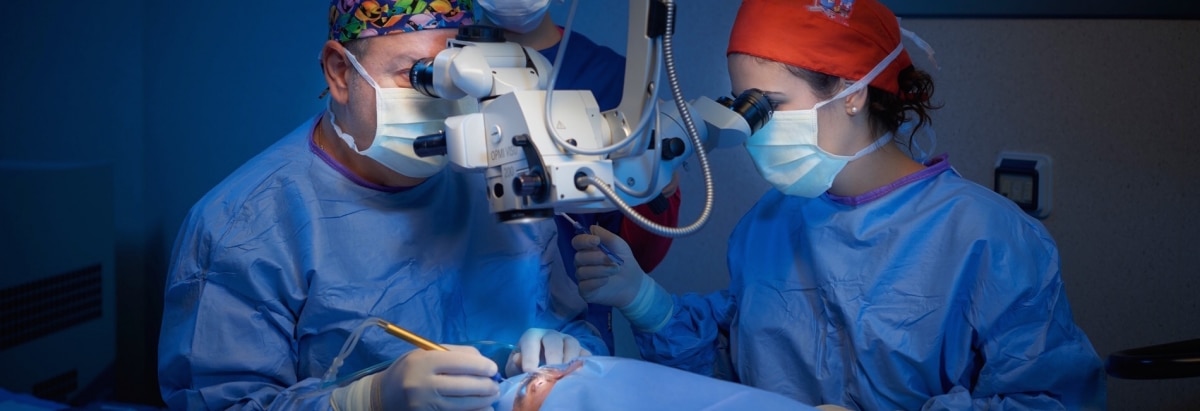Vitrectomy
Vitrectomy is a microsurgical procedure aimed at removing the vitreous humour from the eye and its opacities and/or retinovitreous humour membrane that may be present with or without retinal detachment; when necessary, during the same operation, we proceed to remove the epiretinal and/or subretinal membranes. This surgical technique is also indicated in particular cases of retinal detachment. The current micro-invasive techniques make it faster and more reliable than before.

The partial or total removal of the vitreous humour is performed with a special tool, called vitreous humour, which cuts and removes it; the vitrectomer is inserted into the posterior chamber through a small incision on the outside of the eyeball. Simultaneously with aspiration, a physiological saline solution is injected into the posterior chamber, which will replace the vitreous body. Over time, this solution will be replaced by aqueous humour, which, unlike vitreous humour, is constantly renewed and does not allow the formation of opacity. Surgery can be done either under general anaesthesia or under local anaesthesia, but in any case with admission and discharge on the same day, as a day-surgery procedure.
Visual recovery usually occurs slowly and is not comparable to what happens after cataract surgery, sometimes with slow improvements that can even last for months after surgery.
Want to learn more?

